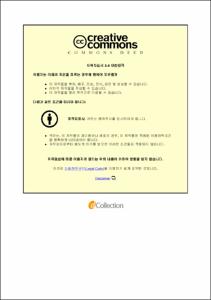Ulsan Univ. Repository
Thesis
General Graduate School
Convergence Technology Engineering of Heavy Industry
1. Theses(Master)
선급용 TMCP 강재의 대입열용접 열영향부 충격인성에 미치는 탄소 함량의 영향
- Abstract
- It has been required to use thicker plate because container ship recently use to carry a large number of containers at one time. To enhance the productivity with thicker plate, high heat input welding process which are SAW and EGW process is recommended rather than low heat input are FCAW process. To guarantee the tensile properties and impact toughness at heat affected zone with high heat input welding, it is strongly required to use alloy designed TMCP steel. In other hands, More than 90% of the steel used in shipbuilding are general steel without micro-alloying elements which are required impact toughness at 0˚C, the mechanical properties depend on the carbon content. Therefore, it is important to evaluate the weldability of the steel according to the carbon contents in order to evaluate the steel to be applied high heat input welding.
In this study, the effects of carbon contents on impact toughness in TMCP steel heat affected zones were investigated for high heat input welding. Three kinds of steel plates with different carbon contents were prepared and each plate was welded by eletrogas welding. Evaluation of impact toughness was carried out with charpy impact notch test. Metallographic analysis was conducted to examine the relationship between microstructure and impact toughness. The results showed that the increased carbon content enhanced the hardenability of the steel, thereby increasing a volume fraction of bainitic ferrite, widmanstätten ferrite, pearlite, and martensite-austenite (MA) constituents in the HAZ. This microstructural feature in the HAZ had a negative effect on the impact toughness and in particular, the impact toughness was deteriorated by the coarse pearlite structure with a large amount of MA constituents. In this case, the MA constituents were acted as crack initiation sites and the cracks were propagated easily along the coarse pearlite regions. By reducing the Ac3 temperature of the steel, furthermore, the increased carbon content increased the width of the CGHAZ, which is detrimental to the impact toughness. These results reveal that the carbon contents in TMCP steel should be limited to prevent the formation of pearlite and MA constituents in the HAZ during high heat input welding.
- Issued Date
- 2017
- Awarded Date
- 2018-02
- Type
- Dissertation
- Alternative Author(s)
- Lee SangHyup
- Affiliation
- 울산대학교
- Department
- 일반대학원 중공업융합기술공학과
- Advisor
- 이정구
- Degree
- Master
- Publisher
- 울산대학교 일반대학원 중공업융합기술공학과
- Language
- kor
- Rights
- 울산대학교 논문은 저작권에 의해 보호받습니다.
- Appears in Collections:
- Convergence Technology Engineering of Heavy Industry > 1. Theses(Master)
- 파일 목록
-
-
Download
 200000006328.pdf
기타 데이터 / 3.73 MB / Adobe PDF
200000006328.pdf
기타 데이터 / 3.73 MB / Adobe PDF
-
Items in Repository are protected by copyright, with all rights reserved, unless otherwise indicated.